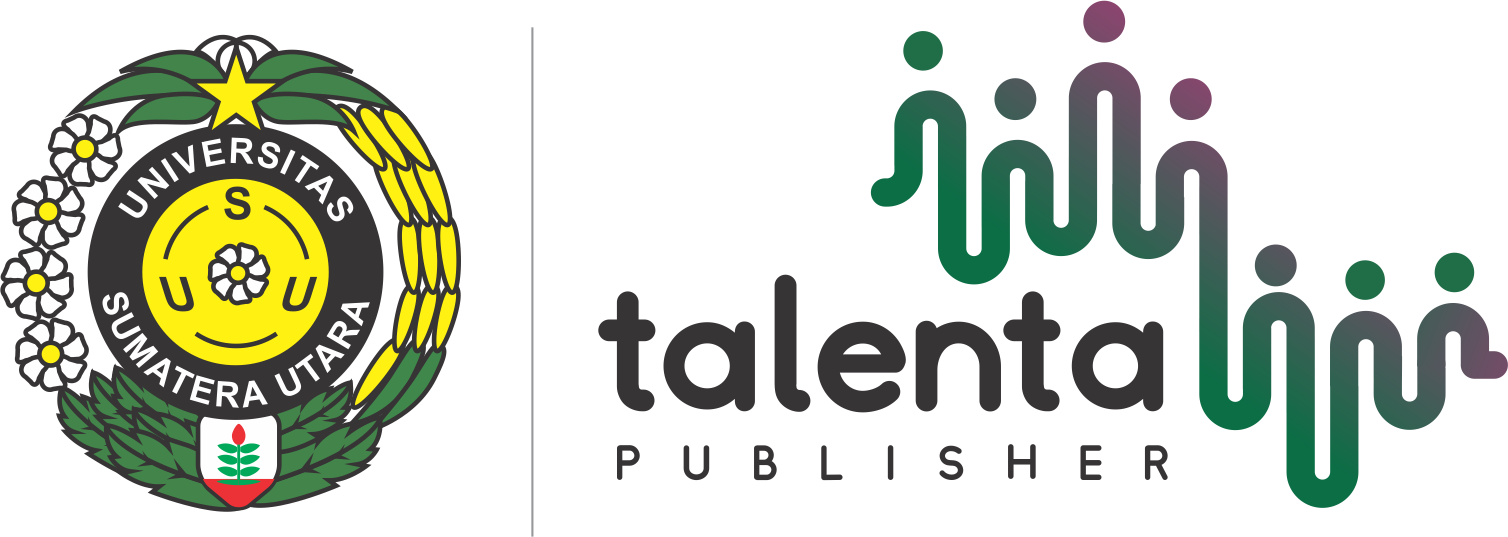Pengujian Beberapa Rodentisida Nabati Terhadap Tikus Sawah (Rattus Argentiventer Robb And Kloss) di Laboratorium
Analysis of Several Phyto-rodenticides on Rice Mice (Rattus argentiventer Robb And Kloss) in the Laboratory
| Authors | ||
| Issue | Vol 1 No 1 (2018): Talenta Conference Series: Agricultural and Natural Resources (ANR) | |
| Section | Articles | |
| Galley | ||
| DOI: | https://doi.org/10.32734/anr.v1i1.95 | |
| Keywords: | tikus sawah umbi gadung daun tembakau biji jarak babadotan | |
| Published | 2018-10-16 |
Abstract
Tikus sawah (Rattus argentiventer Robb and Kloss) merupakan salah satu hama penting pada tanaman padi. Kerusakan akibat serangan tikus pada tanaman padi di Indonesia mencapai kerugian sebesar 15¬20% setiap tahunnya.Tujuan penelitian ini untuk menguji adanya pengaruh pemberian beberapa rodentisida nabati terhadap mortalitas tikus sawah (R.argentiventer) di laboratorium. Penelitian ini dilaksanakan di Laboratorium Pengendalian Hama Vertebrata (LPHV) Balai Besar Perbenihan dan Proteksi Tanaman Perkebunan (B2P2TP), Medan dari bulan Maret sampai April 2016. Rancangan percobaan yang digunakan adalah Rancangan Acak Kelompok (RAK) non faktorial dengan 5 perlakuan yaitu perlakuan P0 (kontrol), P1 (umbi gadung), P2 (daun tembakau), P3 (biji jarak), P4 (daun babadotan) dengan konsentrasi 30% yang masing-masing diulang sebanyak empat kali. Pengamatan meliputi bobot badan tikus, tingkat konsumsi pakan umpan dan persentase mortalitas tikus. Hasil penelitian menunjukkan bahwa penurunan bobot badan tikus tertinggi pada perlakuan P2 (-3,37gr) dan terendah P4 (-0,37gr). Tingkat konsumsi pakan umpan tertinggi yaitu pada perlakuan P1 (8,22) gr dan terendah perlakuan P2 (1,07gr). Mortalitas tertinggi yaitu pada perlakuan P1 (100%) dan terendah P3 (25%).
The ricefield rat (Rattus argentiventer Robb and Kloss) is one of the important pests on rice fields. The damage caused by rats in rice fields in Indonesia reaches a loss of 15.20% every year. This study aims to examine the effect of the addition of several phyto-rodenticides on the rat mortality of rice fields (R. argentiventer) in the laboratory. The experimental design used was a non-factorial Randomized Block Design (RBD) with 5 treatments, such as treatment P0 (control ), P1 (gadung tuber), P2 (tobacco leaf), P3 (castor seed), P4 (babadotan leaf) with a concentration of 30% which was repeated four times respectively. Observations included rat body weight, level of feed intake and percentage of rat mortality. The results showed that the highest reduction in rat body weight was in the treatment of P2 (-3.37 g) and the lowest was in the treatment of P4 (-0.37 g). The highest level of feed intake was in the treatment of P1 (8.22 g) and the lowest was in the treatment of P2 (1.07 g). The highest mortality was in the treatment of P1 (100%) and the lowest was in the treatment of P3 (25%).






